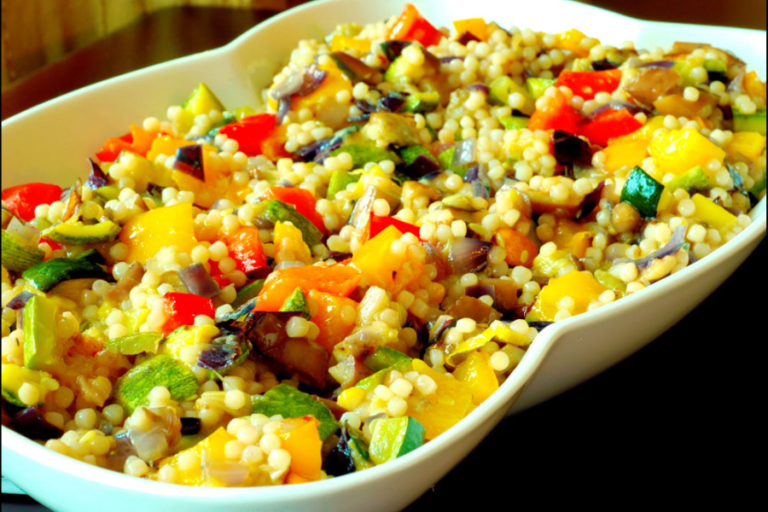Calandrando and Sicily: Where History Meets Flavor
Embark on a flavorful adventure through the rich tapestry of Sicilian cuisine, where every bite tells a tale of tradition, passion, and history. In this blog, we dive deep into the heart of Sicilian gastronomy, uncovering the essence of Calandrando, a dish that perfectly encapsulates Sicily’s culinary legacy. Prepare to indulge your senses in the vibrant world of Sicilian flavors.
A Glimpse into the History of Sicilian Cuisine
Sicilian cuisine is a reflection of the island’s vibrant history, shaped by the diverse cultures that have graced its shores. The ancient Greeks, Romans, Arabs, Normans, and Spanish all left indelible marks on the region’s culinary traditions, transforming it into a melting pot of flavors.
Centuries of trade and conquest introduced exotic ingredients like citrus fruits, almonds, and spices, fusing them with local staples to create the unique Sicilian gastronomic identity we know today. For example, the Arab influence brought the use of saffron and cinnamon, adding depth to dishes like arancini and cassata, while the Spanish contributed techniques such as frying in olive oil.
This blend of influences has evolved into a cuisine that is both bold and nuanced, one that continues to captivate food enthusiasts around the world.
Calandrando: Ingredients Rooted in Tradition
Calandrando is a traditional Sicilian dish that exemplifies the island’s culinary heritage. At its core, it’s a comforting, slow-cooked meal made with tender cuts of beef or veal, simmered in a rich tomato-based sauce. The sauce is infused with classic Mediterranean herbs like oregano and basil, which bring out the natural flavors of the meat.
The dish is typically accompanied by rustic ingredients such as hearty potatoes and sweet carrots, which absorb the savory juices and create a perfect balance of textures. The simplicity of Calandrando’s ingredients is a testament to the island’s focus on freshness, quality, and an appreciation for the bounty of its land and sea.
Regional Variations and Local Specialties
Sicily’s diverse regions offer unique interpretations of traditional dishes, and Calandrando is no exception. While the basic recipe remains the same, local specialties vary depending on the availability of fresh ingredients. Along Sicily’s coastlines, seafood plays a key role, with dishes like pesce spada alla ghiotta (swordfish stew) and spaghetti ai ricci di mare (sea urchin pasta) showcasing the island’s rich marine life.
Inland regions, where agriculture thrives, feature heartier fare, such as arancini di carne (meat-stuffed rice balls) and caponata siciliana (a sweet and savory eggplant dish). Trapani, influenced by its Arab past, is known for couscous alla trapanese, a dish served with fish broth, while Catania celebrates its vibrant citrus crops in desserts like cassata. These regional variations allow each part of Sicily to proudly showcase its local produce and cultural heritage.
Food as the Heart of Sicilian Culture
In Sicily, food is more than just sustenance – it’s a celebration of life, culture, and community. Meals bring family and friends together, serving as an expression of love and connection. Every dish tells a story of the island’s history, migration, and resilience.
For Sicilians, cooking is an art form, carefully passed down through generations. Traditional recipes, often safeguarded by grandmothers, are shared at the table like precious family heirlooms. The act of cooking and sharing a meal is revered as a way to honor the island’s past and ensure that its culinary heritage lives on.
Customary Cooking Procedures and Approaches
Sicilian cuisine is steeped in traditional cooking techniques that have been perfected over centuries. Slow simmering is a key method used to enhance the flavors of dishes like Calandrando, allowing the meat to become tender and the sauce to develop deep, complex flavors.
Grilling over an open flame is another popular technique, especially for seafood and vegetables, adding a distinct smoky flavor to the food. Frying, particularly in olive oil, is another staple method in Sicilian kitchens, lending a crispy texture to favorites like arancini and panelle (chickpea fritters).
These time-honored techniques not only preserve the authenticity of Sicilian dishes but also highlight the natural flavors of the island’s fresh, local ingredients.
How to Make Traditional Calandrando
Ready to create a taste of Sicily in your own kitchen? Follow this simple guide to make a traditional Calandrando dish:
Ingredients:
- 1 lb of tender beef or veal, cubed
- 2 large onions, finely chopped
- 3 garlic cloves, minced
- 1 large can of crushed tomatoes
- 4 medium-sized potatoes, peeled and cubed
- 2 large carrots, peeled and sliced
- Fresh herbs: oregano, basil, and a pinch of red pepper flakes
- Salt and pepper to taste
- Olive oil for sautéing
Instructions:
- In a large pot, heat olive oil and sauté the onions and garlic until fragrant.
- Add the cubed meat and sear until browned on all sides.
- Pour in the crushed tomatoes, and season with oregano, basil, salt, and pepper.
- Cover the pot and let the mixture simmer on low heat for about 2 hours, stirring occasionally.
- After 2 hours, add the potatoes and carrots. Let them cook until tender, about 30 minutes more.
- Serve hot, paired with rustic bread or over pasta for a hearty and flavorful Sicilian meal.
Where in Sicily is Calandrando to Be Experienced?
For those who want to experience Calandrando in its most authentic form, Sicily offers a range of dining experiences that cater to both locals and visitors. Family-owned trattorias and agriturismos (farm stays) often serve homemade versions of the dish, prepared with love and time-honored techniques.
Each region in Sicily offers its own variation of Calandrando, so whether you’re in Palermo, Catania, or Trapani, you’ll find this dish infused with local flavors. Look for restaurants that source their ingredients from nearby farms or markets, ensuring the freshest and most authentic taste.
Modern Twists on a Classic Calandrando
While Calandrando remains a traditional favorite, many chefs are giving it a modern twist. For a contemporary version, you might experiment with adding seafood like prawns or mussels, which lend a fresh, briny note to the dish.
Vegetarians can enjoy a plant-based version by substituting meat with roasted eggplant, zucchini, and peppers, creating a hearty, vegetable-forward dish. Additionally, modern diets might call for swapping out pasta for gluten-free alternatives or using spiralized vegetables like zucchini noodles.
To elevate the dish further, garnish with toasted pine nuts or a drizzle of lemon-infused olive oil for added complexity and texture.
Conclusion:
Exploring Sicily’s culinary heritage is a journey through history, culture, and flavor. Calandrando represents the essence of Sicilian cuisine – a fusion of diverse influences, fresh ingredients, and time-honored techniques.
Whether you’re making Calandrando at home, dining at a traditional Sicilian trattoria, or enjoying a modern interpretation, each bite is a testament to the island’s rich culinary legacy.
So the next time you crave a taste of Sicily, let Calandrando take you on a flavorful journey through the heart of this vibrant Mediterranean island.
Keep an eye for more news & updates on Vents Radar!

